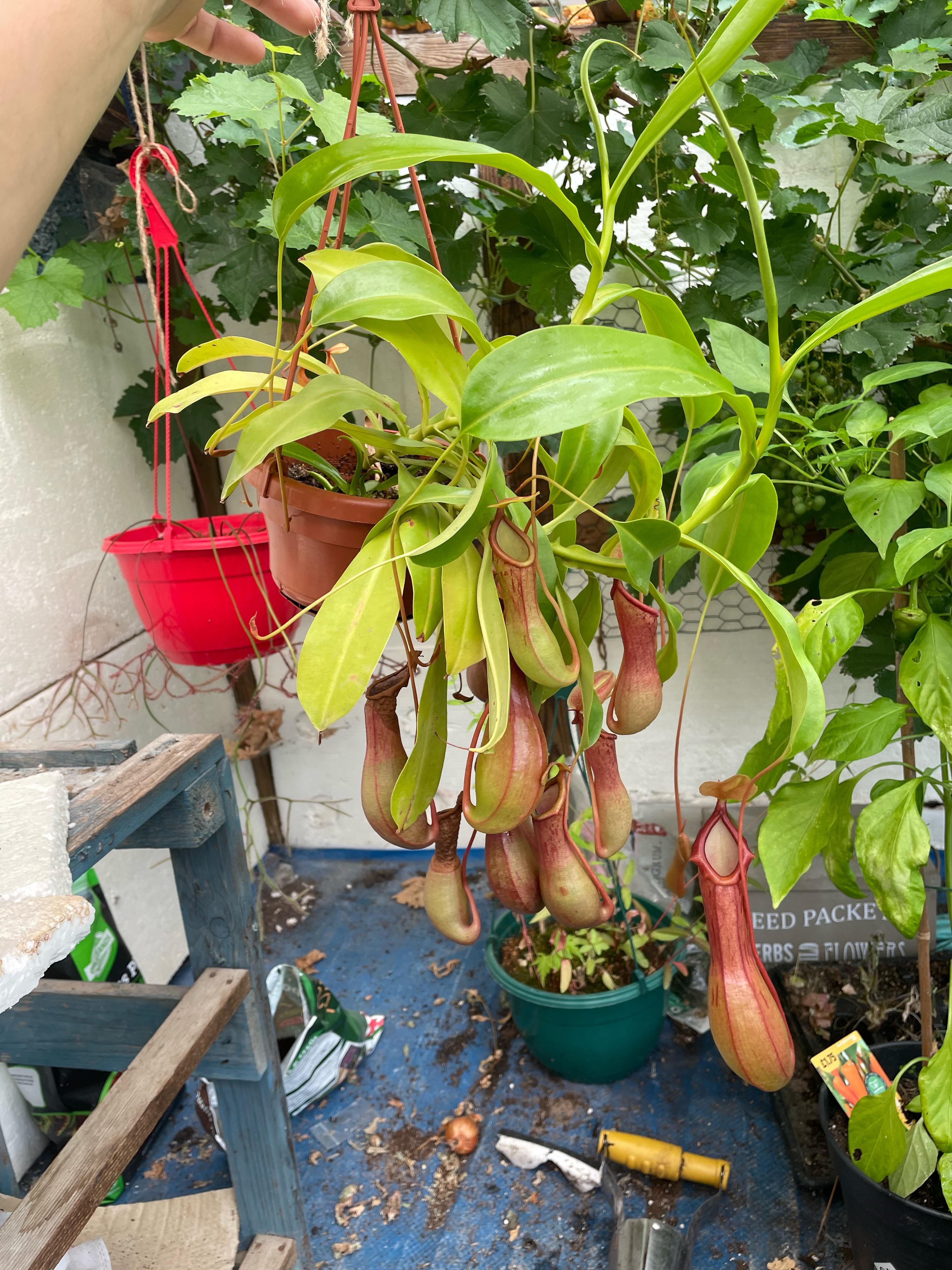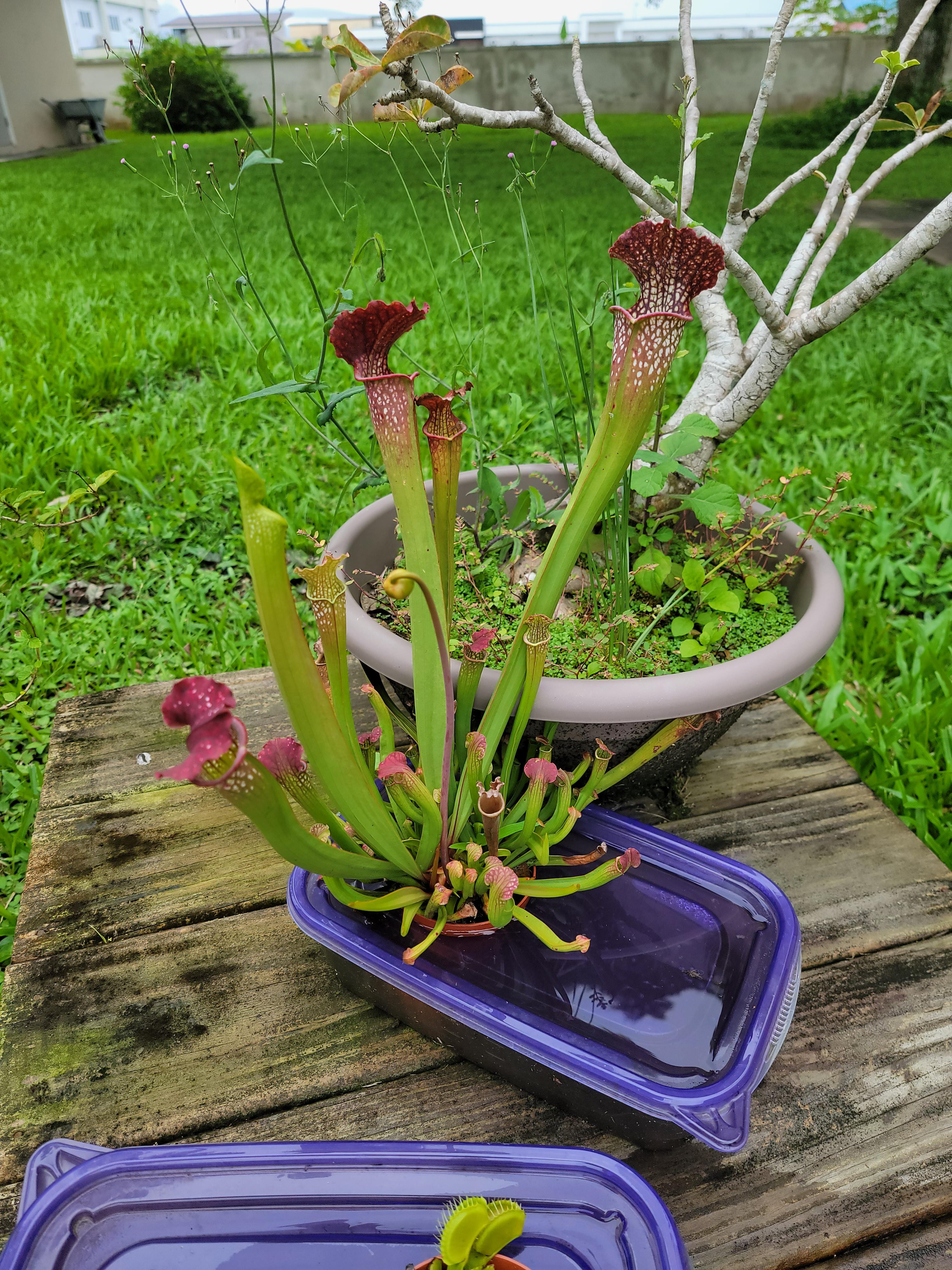Alright, let’s talk about repotting pitcher plants, you know, those fancy bug-eating things. I ain’t no expert, but I’ve done it a few times, and my plants seem alright, so I guess I know a thing or two.
First off, when’s the best time to do this repotting thing? Well, it’s like waking up a sleepy bear – you wanna do it in the spring, before it gets all hot and bothered and starts growing like crazy. Don’t mess with it in the middle of summer, that’s for sure. Spring is when everything wakes up, so it’s the best time for messing around with the roots.

Now, how do you know your pitcher plant needs a new home? Well, it’s kinda like when your shoes get too tight. If the roots are pokin’ out the bottom of the pot or crawlin’ all over the top, that’s a sure sign. And if the poor thing ain’t growin’ much anymore, or the pitchers are lookin’ sad and droopy, well, it’s tellin’ ya it’s cramped. Think of it like this, if you lived in a tiny shack all your life, you’d wanna move to a bigger house sooner or later right? Same goes for plants.
So, you got your new pot and some dirt… well, not just any dirt. Pitcher plants are picky eaters, both with bugs and dirt. You need that special peat moss stuff, the kind that holds water good but don’t let the roots get all soggy. And don’t you go usin’ no regular plant food, these things eat bugs, remember? They don’t need all that extra stuff.
Alright, now for the messy part. Carefully pull that plant out of its old pot. Be gentle, now! Don’t go yankin’ it like you’re pullin’ weeds. Once it’s out, you gotta get rid of that old dirt. I use a chopstick – yeah, the kind you eat with – to poke and prod and get all that old stuff off the roots. Just be careful not to break too many roots. A few broken ones are okay, but don’t go tearing ’em all up.
Then, put some of that new peat moss in the new pot. Not too much, just enough so the plant sits at the same level it did before. You don’t want it buried too deep or sittin’ too high. Put the plant in the middle and fill the rest of the pot with peat moss, pat it down a bit, not too hard. You want it firm, but not packed so tight the roots can’t breathe.
After that, give it a good waterin’. Not a flood, just a good soakin’ so the peat moss gets nice and wet. And that’s about it. Put it back where it was before, and let it be. Don’t go fussin’ over it too much. It needs time to settle in.
- Choosing the Right Time: Early spring, before new growth starts. This is important for the plant to settle in.
- Signs for Repotting: Roots coming out of the pot, slow growth, sad-looking pitchers. All these things are your plant’s way of saying it needs a bigger house.
- The Right Dirt: Use peat moss, not regular potting soil. These plants have special needs, so don’t use regular soil.
- Potting Process: Gently remove old dirt, place in new pot with fresh peat moss, water well. Be very gentle and don’t rush things.
- Aftercare: Let it settle, don’t overwater. Too much love can sometimes be bad.
Now, some folks say you gotta prune these plants, cut off the dead pitchers and stuff. Well, I guess that makes sense. If somethin’s dead, it ain’t doin’ the plant no good. But I ain’t too fussy about it. If it looks real bad, I’ll snip it off, but otherwise, I just let it be. Nature knows what it’s doin’.
And that’s all there is to it, really. Repotting pitcher plants ain’t rocket science. Just pay attention to what your plant’s tellin’ ya, and give it what it needs. A bigger pot, some fresh peat moss, and a little bit of water, and it’ll be happy as a clam. Or, well, as happy as a bug-eatin’ plant can be, I guess. They eat bugs, so they can’t be that happy.

Remember, every plant is a little bit different, so don’t be afraid to experiment a little. If somethin’ don’t work, try somethin’ else. That’s how you learn. And if you still ain’t sure, well, ask someone who knows more than me. I’m just an old woman who likes plants, and I’m telling you what’s worked for me over the years. You go do what works for you.
Anyways I hope this helps y’all with your pitcher plant. Just remember these plants are special and take a bit of special care and special dirt, and good luck with your plant. They are really something special once you get the hang of it.




















